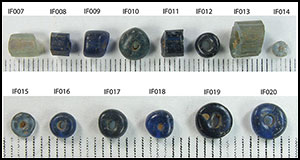Article contents
Ile-Ife and Igbo Olokun in the history of glass in West Africa
Published online by Cambridge University Press: 05 June 2017
Abstract

Recent excavations at the site of Igbo Olokun in the Yoruba city of Ile-Ife, in south-western Nigeria, have shed light on early glass manufacturing techniques in West Africa. The recovery of glass beads and associated production materials has enabled compositional analysis of the artefacts and preliminary dating of the site, which puts the main timing of glass-working between the eleventh and fifteenth centuries AD. The results of these studies suggest that glass bead manufacture at this site was largely independent of glass-making traditions documented farther afield, and that Igbo Olokun may represent one of the earliest known glass-production workshops in West Africa.
- Type
- Research
- Information
- Copyright
- Copyright © Antiquity Publications Ltd, 2017
References
- 43
- Cited by




